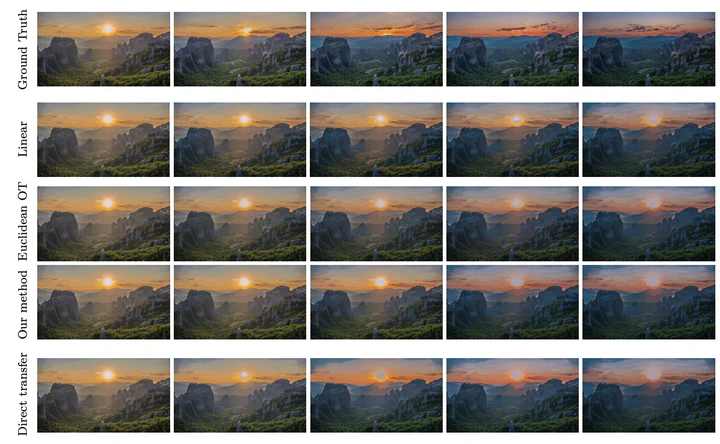Ground Metric Learning on Graphs

Abstract
Optimal transport (OT) distances between probability distributions are parameterized by the ground metric they use between observations. Their relevance for real-life applications strongly hinges on whether that ground metric parameter is suitably chosen. The challenge of selecting it adaptively and algorithmically from prior knowledge, the so-called ground metric learning (GML) problem, has therefore appeared in various settings. In this paper, we consider the GML problem when the learned metric is constrained to be a geodesic distance on a graph that supports the measures of interest. This imposes a rich structure for candidate metrics, but also enables far more efficient learning procedures when compared to a direct optimization over the space of all metric matrices. We use this setting to tackle an inverse problem stemming from the observation of a density evolving with time; we seek a graph ground metric such that the OT interpolation between the starting and ending densities that result from that ground metric agrees with the observed evolution. This OT dynamic framework is relevant to model natural phenomena exhibiting displacements of mass, such as the evolution of the color palette induced by the modification of lighting and materials.
@article{heitz20groundmetric,
abstract = {Optimal transport (OT) distances between probability
distributions are parameterized by the ground metric
they use between observations. Their relevance for
real-life applications strongly hinges on whether
that ground metric parameter is suitably chosen. The
challenge of selecting it adaptively and
algorithmically from prior knowledge, the so-called
ground metric learning (GML) problem, has therefore
appeared in various settings. In this paper, we
consider the GML problem when the learned metric is
constrained to be a geodesic distance on a graph
that supports the measures of interest. This imposes
a rich structure for candidate metrics, but also
enables far more efficient learning procedures when
compared to a direct optimization over the space of
all metric matrices. We use this setting to tackle
an inverse problem stemming from the observation of
a density evolving with time; we seek a graph ground
metric such that the OT interpolation between the
starting and ending densities that result from that
ground metric agrees with the observed
evolution. This OT dynamic framework is relevant to
model natural phenomena exhibiting displacements of
mass, such as the evolution of the color palette
induced by the modification of lighting and
materials.},
author = {Matthieu Heitz and Nicolas Bonneel and David
Coeurjolly and Marco Cuturi and Gabriel Peyré},
doi = {10.1007/s10851-020-00996-z},
journal = {Journal of Mathematical Imaging and Vision},
month = {November},
pages = {1--19},
title = {Ground Metric Learning on Graphs},
year = {2020}
}